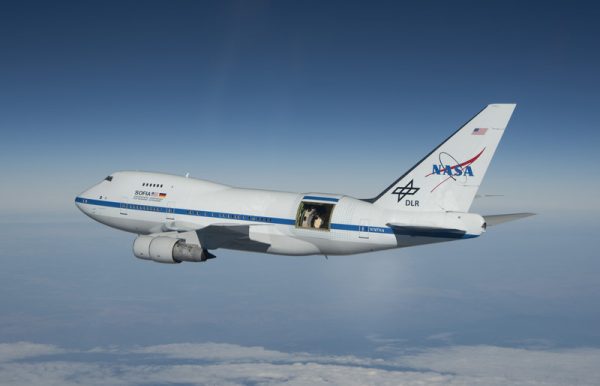Astronomers See the Wreckage from a Collision Between Exoplanets – Universe Today
The history of our Solar System is punctuated with collisions. Collisions helped create the terrestrial planets and end the reign of the dinosaurs. And a massive collision between Earth and an ancient body named Theia likely created the Moon.
Now astronomers have found of evidence of a collision between two exoplanets in a distant solar system.
Our Solar System is a relatively sedate place now, compared to its younger years. If we want to see planets colliding, we have to look to distant systems. That’s what a team of astronomers did when they pointed the Spitzer Space Telescope and ground observatories at BD +20 307, a double star system about 300 light years away.
The stars in that system are about a billion years old, old enough for things to have settled down as far as collisions go. Yet when they looked at it about a decade ago, they saw swirling debris that was warmer than they expected. In a system with billion-year-old stars, any debris should have cooled down by now, so its presence suggests a more recent collision.
Those observations are a decade old, and more recently astronomers used SOFIA (Stratospheric Observatory for Infrared Astronomy) to take another look at the BD +20 307 system. They found that the infrared brightness of the debris had increased by about 10%, indicating that there’s even more warm debris in the system.
“Given the mature age of BD +20 307, it is extremely unusual for the system to have such copious amounts of warm dust within ~1 au.”
From “Studying the Evolution of Warm Dust Encircling BD +20 307 Using SOFIA”
These results are published in the Astrophysical Journal. The lead author is Maggie Thompson, a graduate student at UC Santa Cruz. The title of the paper is “Studying the Evolution of Warm Dust Encircling BD +20 307 Using SOFIA.”
“The warm dust around BD +20 307 gives us a glimpse into what catastrophic impacts between rocky exoplanets might be like,” said Thompson. “We want to know how this system subsequently evolves after the extreme impact.”
Our Solar System has collections of rocky debris like the asteroid belt. But it’s old, cold debris, the result of ancient collisions. It’s also further away from the Sun than the debris disk in BD +20 307 is. If a distant civilization was looking at our Solar System, they would measure the age of the Sun and the location and temperature of the rocky debris and it would make sense.
“This is a rare opportunity to study catastrophic collisions occurring late in a planetary system’s history.”
Alycia Weinberger, Lead Investigator.
But in the BD +20 307 system, something doesn’t quite add up. There just shouldn’t be this much dust this warm, so close to the binary stars. If massive collisions between planets only happen in the chaotic early years of a solar system’s life, then that dust should’ve disappeared long ago. Typically, the dust is removed through collisional cascade, where repeated collisions continually break rock up into smaller and smaller pieces. Eventually the pieces are so small that radiation pressure from the stars blows them away.
“This is a rare opportunity to study catastrophic collisions occurring late in a planetary system’s history,” said Alycia Weinberger, staff scientist at the Carnegie Institution for Science’s Department of Terrestrial Magnetism in Washington, and lead investigator on the project. “The SOFIA observations show changes in the dusty disk on a timescale of only a few years.”

There are other potential explanations for this warm dust. It could be moving closer to the stars and absorbing more energy. But that’s unlikely to occur in only 10 years, which is just a brief moment in astronomical terms. It’s also unlikely since as the dust grain size decreases through collisional cascade, the dust is more likely to be ejected by solar radiation.
There is another process that governs dust behaviour around a star. It’s called the Poynting-Robertson effect. It’s a type of drag that can cause particles too large to be blown away by solar radiation to spiral into the star. As the dust moves closer to the star it gets warmer.
In their paper, the authors discuss some other possibilities. Both the stars in this system are F-type stars, which are not usually variable. But in binary pairs they can be, even though their variability decreases with age.
If there is variability in one or both stars, and if the debris disk surrounding the stars is inclined relative to the orbital plane of the stars, that could cause the warming debris disk. If hot spots on the stars generate more X-rays, and if the debris disk is inclined, then it could cause the warming debris that the astronomers have detected.
The authors say that more observations are needed before there’s a definite conclusion. But right now, a planetary collision fits the evidence the best. And that means there’s a real opportunity here. As they say in the conclusion of their paper, “Understanding BD +20 307 and other systems like it with extremely dusty debris disks could advance our knowledge of catastrophic collisions, the effects of binary stars on debris disks and the evolution of planetary systems.”
More:
- Press Release: When Exoplanets Collide
- Research Paper: Studying the Evolution of Warm Dust Encircling BD +20 307 Using SOFIA
- Wikipedia: Circumstellar Debris Disk




